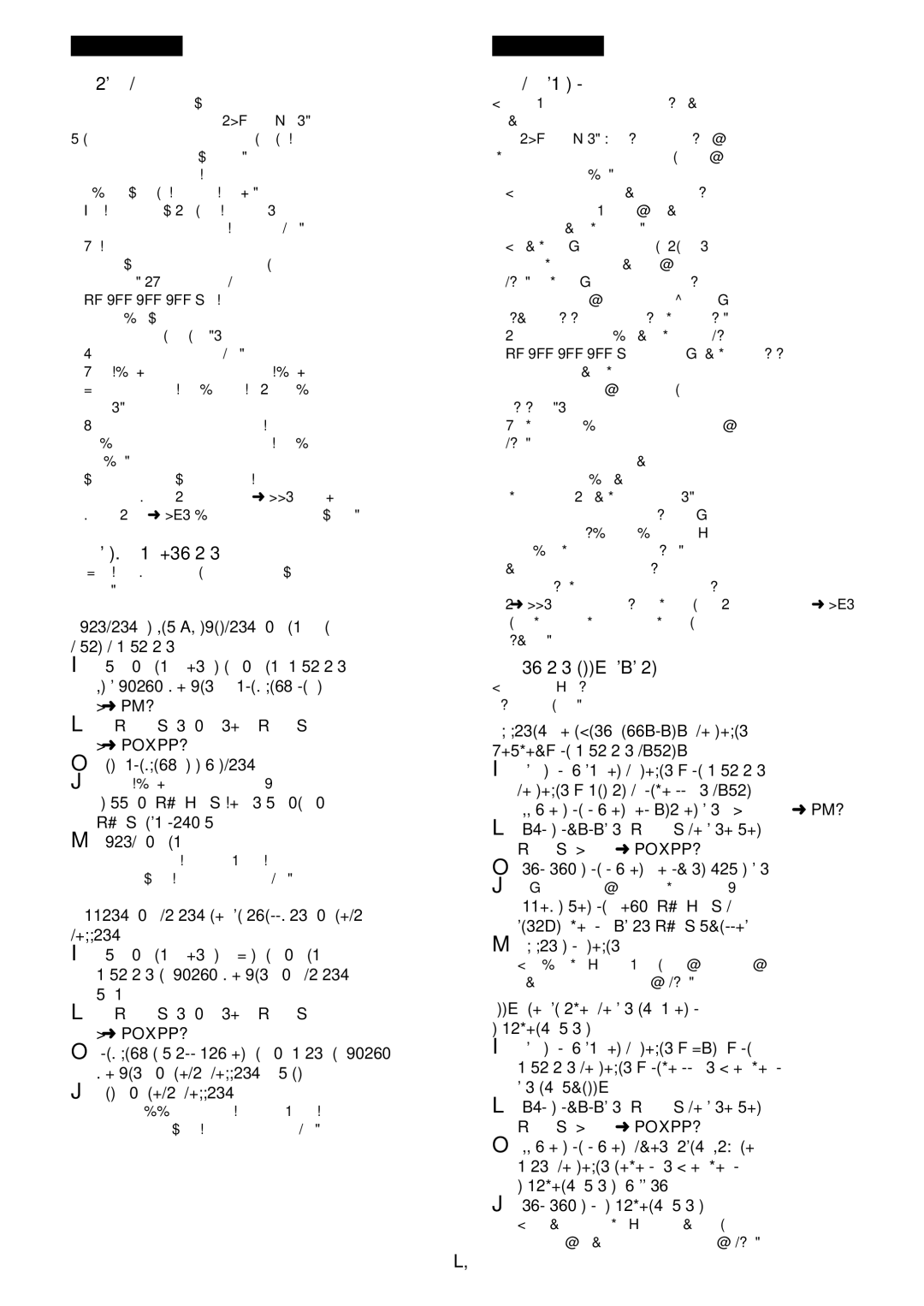ENGLISH
»Time Code
Time Code signals are the data which indicates the time in hours, minutes, seconds and frames (30 frames/sec). Having this data included in the recording gives every single picture on the tape its own address.
¡The Time Code is automatically recorded as part of the sub code with every recording you make.
¡When you insert a new (previously unrecorded) cassette, the Time Code automatically starts from zero. If you insert a recorded cassette, the Time Code continues where the time code of the last previous scene stopped. (In this case, the zero indication [0h:00m:00s:00f] may appear after inserting the cassette, but when the recording starts, the Time Code records from the previous value.)
¡You cannot reset the Time Code to zero.
¡In playback modes other than the Normal Playback Mode, the Time Code may not be displayed (or not be correct).
¡Unless the Time Code is recorded continuously from the beginning of the tape, precise editing may not be possible. To ensure that the Time Code is recorded without interruption, we recommend that you use the Camera Search Function (m33) or Blank Search Function (m34) before starting to record a new scene.
»Memory Stop Function
The Memory Stop Function is convenient for the following operations.
Rewinding or
1Reset the Tape Counter at the tape position from which you want to play back later.
(m65)
2Set [DISPLAY] on the Menu to [MEMORY].
3Start playback or recording.
4After playback or recording is finished:
Press the [VCR/CAM] Button so that the [VCR] Lamp lights.
5Rewind the tape.
The tape automatically stops approximately at the position at which you reset the counter to zero.
Stopping the editing automatically in the audio dubbing
1Reset the Tape Counter to zero at the tape position at which you want the editing to stop.
2Set [DISPLAY] on the Menu to [MEMORY].
3Play back a still picture at the point at which you want the audio dubbing to start.
4Start the audio dubbing.
The audio dubbing automatically stops approximately at the position at which you reset the counter to zero.
FRANÇAIS
»Code temporel
Les signaux de code temporel sont les données qui indiquent le temps en heures, minutes, secondes et trames (30 trames/s). En intégrant ces données à l’enregistrement, on donnera une adresse individuelle à chacune des images du ruban.
¡Le code temporel est automatiquement enregistré comme partie du code auxiliaire à chaque enregistrement que l’on effectue.
¡Lorsqu’on insère une cassette neuve (vierge), le code temporel s’enclenche automatiquement à partir de zéro. Si l’on insère une cassette enregistrée, le code temporel se poursuit à partir du point où la dernière séquence précédemment enregistrée s’est terminée. (Dans ce cas, il est possible que l’indication zéro [0h:00m:00s:00f] apparaisse après qu’on ait inséré la cassette, mais lorsque l’enregistrement commence, le code temporel enregistre à partir de la valeur précédente.)
¡Il n’est pas possible de remettre le code temporel à zéro.
¡Dans les modes de lecture autres que le mode lecture normale, il est possible que le code temporel n’apparaisse pas (ou qu’il soit incorrect).
¡Sauf si le code temporel est enregistré de manière continue depuis le début du ruban, il peut être impossible d’effectuer un montage précis. Pour garantir que le code temporel soit enregistré sans interruption, il est conseillé d’utiliser la fonction recherche caméscope (m33) ou la fonction repérage d’espace vierge (m34) avant d’enclencher l’enregistrement d’une nouvelle séquence.
»Fonction arrêt mémoire
La fonction arrêt mémoire est commode pour les opérations suivantes.
Rebobinage ou avance accélérée du ruban jusqu’à la position désirée
1Remettre le compteur de ruban à la position du ruban à partir de laquelle on désire effectuer la lecture ultérieurement. (m65)
2Régler l’élément [DISPLAY] du menu sur [MEMORY].
3Enclencher la lecture ou l’enregistrement.
4 Après la lecture ou à la fin de l’enregistrement:
Appuyer sur la touche [VCR/CAM] de
manière que le témoin [VCR] s’allume.
5 Rebobiner le ruban.
Le ruban s’arrête approximativement à la position à laquelle on a remis le compteur à zéro.
Arrêt automatique du montage pour le repiquage sonore
1Remettre le compteur de ruban à zéro à la position du ruban à laquelle on veut que le montage s’arrête.
2Régler l’élément [DISPLAY] du menu sur [MEMORY].
3Effectuer la lecture d’une image fixe au point du ruban auquel on veut que le repiquage sonore commence.
4Enclencher le repiquage sonore.
Le repiquage sonore s’arrête automatiquement vers la position à laquelle on a remis le compteur à zéro.
